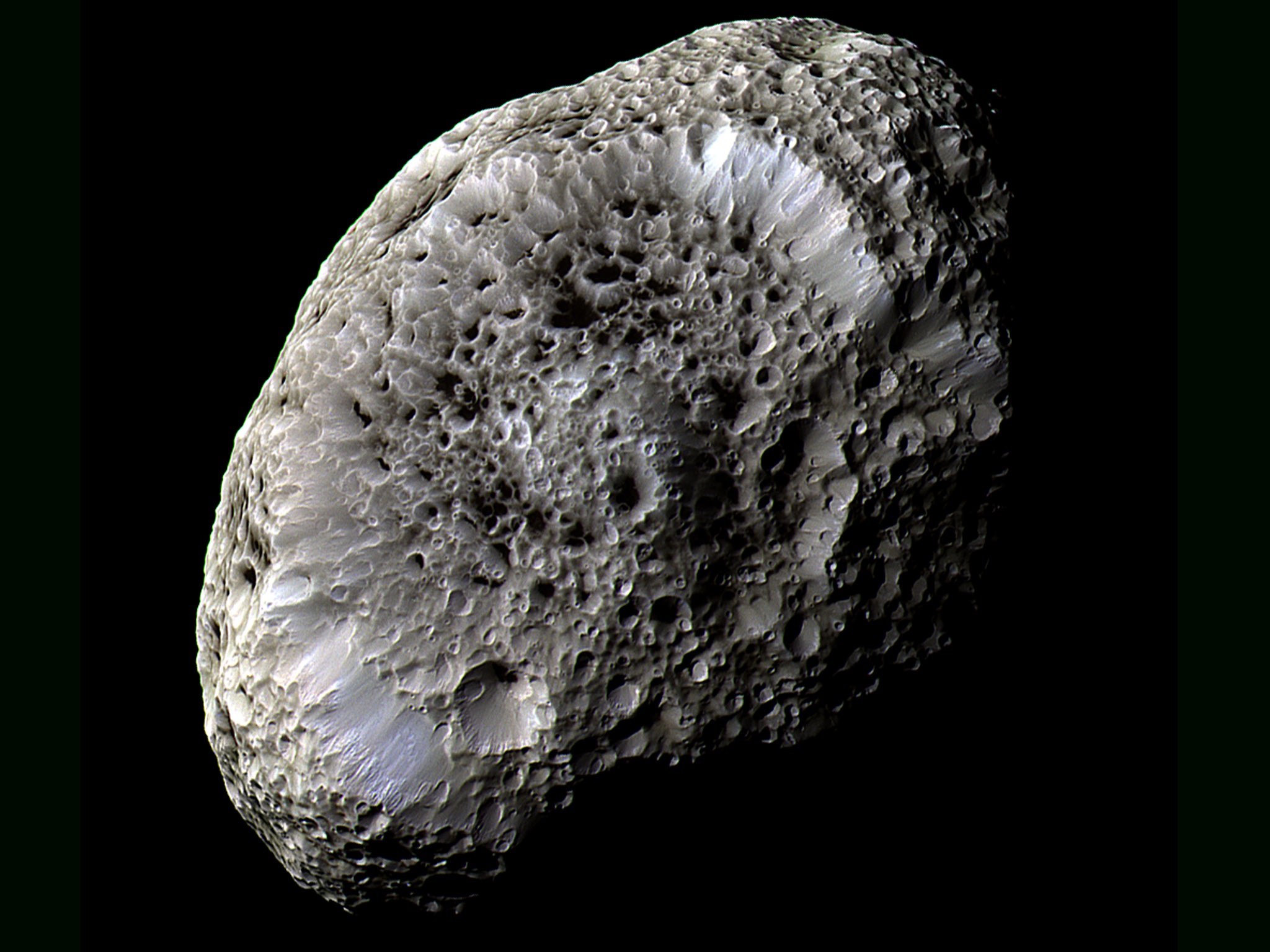Saturn’s sponge-like moon, Hyperion, captured in stunning detail after spacecraft flyby
The holey look of the moon comes from its very low density

Your support helps us to tell the story
From reproductive rights to climate change to Big Tech, The Independent is on the ground when the story is developing. Whether it's investigating the financials of Elon Musk's pro-Trump PAC or producing our latest documentary, 'The A Word', which shines a light on the American women fighting for reproductive rights, we know how important it is to parse out the facts from the messaging.
At such a critical moment in US history, we need reporters on the ground. Your donation allows us to keep sending journalists to speak to both sides of the story.
The Independent is trusted by Americans across the entire political spectrum. And unlike many other quality news outlets, we choose not to lock Americans out of our reporting and analysis with paywalls. We believe quality journalism should be available to everyone, paid for by those who can afford it.
Your support makes all the difference.This stunning image shows one of Saturn’s outer moons, Hyperion, looking remarkably like a huge space sponge.
The picture was taken by the Cassini spacecraft during a flyby, as part of its mission to map the satellites around Saturn.
During its flyby, Cassini was blasted by a burst of charged particles from Hyperion, effectively suffering a 200-volt electric shock.
The "attack" was due to the small moon's surface becoming electrostatically charged within Saturn's magnetic field.
Potato-shaped Hyperion, measuring 410 by 260 kilometres (255 by 161 miles), is one of the largest bodies in the solar system known to have such an irregular form.
Its "spongy" appearance is due to its very low density. The moon is porous, with well-preserved craters of all shapes and sizes packed together across its surface.
Scientists believe Hyperion is mostly made from water ice, with small amounts of rock.
The moon has a naturally reddish colour which was toned down in this image to enhance the visibility of its surface features.
Cassini was around 62,000 kilometres (38,525 miles) from Hyperion when the picture was taken on September 26, 2005.
Additional reporting by Press Association
Join our commenting forum
Join thought-provoking conversations, follow other Independent readers and see their replies
Comments